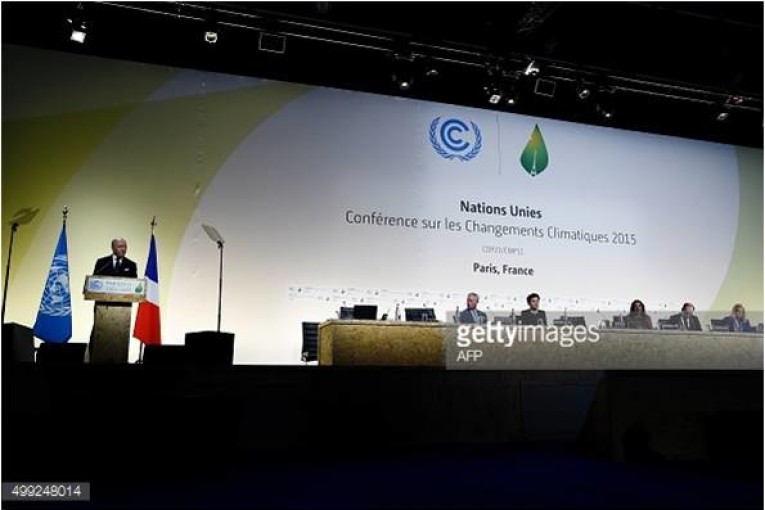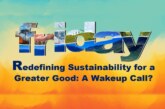
(Dr. Arvind Kumar, President, India Water Foundation)
This brief report provides highlights of the COP-21 for 30 November- 1 December 2015
The 21st session of the Conference of the Parties to the UN Framework Convention on Climate Change (UNFCCC COP 21) and 11th session of the Conference of the Parties serving as the meeting of the Parties to the Kyoto Protocol (CMP 11) commenced with great pomp and show on 30 November 2015 in Paris, France. This summit is taking place from 30 November 2015 -11 December 2015.
The COP-21 opened with financial pledges at leaders event on 30 November 2015, where Heads of State and Government attending the Leaders Event on the first day of the 21st session of the Conference of the Parties to the UN Framework Convention on Climate Change (UNFCCC COP 21) addressed, inter alia: the inclusion of gender for ensuring climate justice; the importance of differentiation; the legal form of the agreement; the periodicity of the review process; transparency and accountability rules; whether or not to anchor loss and damage in a permanent mechanism; the role of natural capital accounting; the link between climate change and development; balancing mitigation and adaptation finance; technology transfer in providing mitigation support; and the need to address the degradation of forests, desertification, and biodiversity loss.

While Switzerland announced a 75% increase in its annual contribution to the Least Developed Countries Fund (LDCF), Norway pledged to double its contribution to the Green Climate Fund (GCF) by 2020 in the context of verifiable emissions reductions from REDD+. Spain said it will increase its annual climate finance for developing countries, doubling contributed funds by 2020. New Zealand announced support of NZ$200 million for climate-related actions over the next four years, primarily for Pacific nations. China, Egypt and several other countries warned against denying the legitimate needs of developing countries to improve living standards and develop economically.
In addition to over 140 statements by Heads of State and Government and other officials, Parties elected Laurent Fabius, France’s Minister of Foreign Affairs and International Development, as President of COP 21/CMP 11, by acclamation. Fabius outlined three conditions for success in Paris: mobilizing heads of state and government; bringing together and obtaining commitments from non-governmental actors; and reaching a universal, ambitious climate agreement that is differentiated, fair, lasting, dynamic, balanced, legally binding and ensures that temperature increase stays below 2°C over pre-industrial levels.

In the evening of the 30 November, spin-off groups under the Ad Hoc Working Group on the Durban Platform for Enhanced Action (ADP 2-12) took place on: preamble, purpose (Article 2) and general (Article 2bis); technology development and transfer (Article 7); capacity building (Article 8); implementation and compliance (Article 11), the Conference of the Parties serving as the meeting of the Parties to the Agreement (CMA) (Article 12) and final clauses (Articles 13-26); and work-stream 2.
Events organized by the Africa Pavilion on 30 November commenced with one titled ‘Gender, Climate Change and Sustainable Development in Africa: Challenges and Opportunities Post 2015 Agreements’, during which participants highlighted gender desegregation as a missing link in the UNFCCC process, and called for integrating gender into the negotiations. During the ‘Financing Climate Change in Africa – NEPAD Climate Fund’ event, participants stressed the need to mobilize national and local resources, harness international finance to catalyze local action and utilize African financial institutions such as the New Partnership for Africa’s Development (NEPAD) and the African Development Bank (AfDB). The ‘10 Million Trees, 10 Million Souls’ event focused on a project in Benin that aims to plant ten million trees, one for each inhabitant of Benin.
Among the side events that convened around the COP 21 venue at Le Bourget, Paris, France, was an event to launch the ‘Because the Ocean’ Declaration, during which a number of high-level representatives signed the Declaration, stressed the need to “break down the communication silos” between climate and oceans practitioners, and called for countries to commit to an oceans action plan under the UNFCCC.
During the event titled ‘Investing in Resilience – Responding to the Adaptation Needs of the Most Vulnerable’ and organized by the Global Environment Facility (GEF), countries pledged new commitments to the LCDF totaling US$248 million, including: France (€25 million in 2016); Canada (CAD$30 million over the next two years); Denmark (US$22 million in 2016); UK (£30 million in 2016); US (US$51 million in 2015-2016); Italy (US$2 million by the end of 2015); Ireland (€6 million by 2020); and Germany (€50 million in 2015-2016).
The event titled ‘Sustainable Transformation – Nordic Experiences of Nationally Appropriate Mitigation Actions (NAMAs) as Building Blocks for Intended Nationally Determined Contributions (INDCs)’ focused on Nordic financed NAMAs in Asia, Latin America and Africa, and provided insights on how NAMA development helps achieve sustainable impacts and contributes to sectoral transformation.
During the event titled ‘COP 21: The Key Issues’, participants discussed the feasibility of a 1.5˚C target, the feasibility of a proposal of an international criminal tribunal for climate justice, and whether there is still time to craft an ambitious agreement. At the event titled ‘The Potential for Crediting Mitigation Actions Across Countries with Different Types of Intended Nationally Determined Contributions (INDCs)’, panelists discussed how to move toward a more streamlined system for crediting mitigation actions across countries.
During the event titled ‘Impacts and Indigenous Adaptation Strategies from the Amazon and Canada,’ participants expressed concern about: invasive species and changing hunting patterns; how to effectively access climate finance such as funds for REDD+ and those in the Green Climate Fund (GCF); and how to build constructive cooperation between indigenous communities and government agencies.
At the event titled ‘Justice and Future Generations: Achieving Intergenerational Equity in Paris and Beyond,’ participants called for including a strong reference to intergenerational equity in the expected Paris agreement. During the event titled ‘Results of World Wide Views on Climate and Energy,’ participants discussed how the consultation that took place on 6 June 2015, collecting the views of 10,000 citizens who took part in 97 debates in 76 countries, showing how citizens are mobilized and committed to climate and energy issues.
The event titled ‘Sustainable Use of Natural Resources: An Essential Solution to Climate Change’ focused on synergies between decarbonization and the decoupling of natural resource use from economic growth, and presented policy-relevant messages on how to select clean, safe and sustainable low-carbon energy technologies. The event titled ‘China’s Forestry Actions and Creative Risk Management Methods for Climate Change’ presented forest action on climate change in China.
The second day of the COP-21 witnessed commencement of substantive negotiations on 1 December 2015. The Rio Conventions Pavilion and Africa Pavilion, among other organizers of side events, also convened panels on the themes of UNFCCC COP 21. COP 21 and CMP 11 adopted their agendas and organization of work, and heard opening statements in a joint plenary. The Umbrella Group (Australia, Canada, Japan, New Zealand, Kazakhstan, Norway, Russian Federation, Ukraine and US) said Paris must deliver an agreement that creates regular updates for ambition, and highlighted the role of civil society and business, especially the hundreds of initiatives under the Lima-Paris Action Agenda (LPAA).
The Republic of Korea, for the Environmental Integrity Group, called for the adoption of an agreement that is applicable to all, includes a flexible approach to differentiation, and has common rules and a mechanism to increase ambition over time, while Brazil, China, India and South Africa emphasized conducting work in an open, transparent, inclusive and party-driven manner, and said that the Paris agreement should be in line with common but differentiated responsibilities (CBDR) and respective capabilities, and stressed that developed countries must meet their commitments and define a clear roadmap to achieving the US$100 billion goal.
The Subsidiary Body for Scientific and Technological Advice (SBSTA) and the Subsidiary Body for Implementation (SBI) also held their opening plenaries on 1 December. In SBSTA, the Technology Executive Committee (TEC) reported enhanced access to climate technology finance and support for development of national systems of innovation; the Climate Technology Centre & Network (CTCN) announced that it has over 100 network members providing technical assistance in response to developing country requests; the Committee on Earth Observation Satellites highlighted progress on carbon observation from space; and the International Maritime Organization (IMO) reported agreement on a three-step approach to data collection.
Argentina, for a number of developing countries, said measures should not constitute a disguised restriction on international trade, and urged further technical analysis of a market-based mechanism proposed under the International Civil Aviation Organization (ICAO), which should be based on mutual and multilateral consent, which Argentina, with China, said should include CBDR. On the IMO, China expressed concern on the adoption of the European system to monitor carbon dioxide (CO2) emissions from ships in its ports. Japan, Singapore and EU said IMO and ICAO are the suitable places to address these issues, and the Republic of Korea urged Parties to work toward agreement in these organizations.
During the SBI opening plenary, the least developed countries (LDCs) highlighted that the outcome of the Structured Expert Dialogue suggests the need to strengthen the global goal by lowering it to a global average temperature increase of 1.5°C above pre-industrial levels. The Alliance of Small Island States (AOSIS) emphasized that a review of the Clean Development Mechanism (CDM) modalities would create greater confidence in the CDM as a mitigation tool. The Women and Gender group requested ADP negotiations to address the linkages between gender, technology and mitigation.
The Ad Hoc Working Group on the Durban Platform for Enhanced Action (ADP 2-12) Contact Group commenced its work, with spin-off groups and “informal informals” held throughout the day on: preamble, purpose and general; adaptation; mitigation; finance; technology development and transfer; capacity building; global stock-take; transparency; and work-stream 2.
Spin-off group co-facilitators reported back on the previous evening’s meetings, and noted that informal work will focus on the following clusters: on mitigation, the focus is on individual efforts, timing, cooperative approaches, features, information, long-term strategies, housing, and regional and economic organizations; on finance, the work focuses on predictability, institutional arrangements, and actions and commitments; on transparency, the focus is on support, scope and consideration, and a post-Paris work programme for 2016-2020; on capacity building, “issues” remained on differentiation, and informal-informals began discussing principles and public support; and on adaptation, the work is focused on global goal, vision, linkages between mitigation and adaptation, and principles for adaptation efforts. The co-facilitators noted little progress in the spin-off group on implementation, the CMA and final clauses, and said the cancellation of the Kyoto Protocol units and internationally transferred mitigation outcomes are further contentious issues.
The Rio Conventions Pavilion (RCP) commenced on 1 December under the theme ‘Biodiversity and Ecosystems: Meeting the Climate Challenge.’ The RCP is hosted by the Convention on Biological Diversity (CBD) Secretariat. It held seven sessions throughout the day, followed by a summary of key messages.
Participants addressed: synergies among the Rio Conventions (CBD, UNFCCC, and the UN Convention to Combat Desertification (UNCCD)) and how they can help address climate change; the Global Partnership on Forest and Landscape Restoration and achieving land degradation neutrality (LDN); mitigation through enhancing forest carbon stocks; the contribution of the Aichi Biodiversity Targets’ to land-based climate change mitigation; afforestation and agricultural conversion of naturally non-forest ecosystems; and experiences on the implementation of ecosystem-based approaches (EbA) to climate change.
The Africa Pavilion held a ‘High Level Event on African Climate Solutions in the New Climate Change Agreement,’ which launched the African Renewable Energy Initiative and the African Initiative on Adaptation and Loss and Damage. Another event, ‘Africa’s Journey in the Global Climate Negotiations: Key Findings of Stocktaking Studies,’ was organized around the theme of a forthcoming publication on the history, milestones and path of African countries and climate governance, titled ‘Africa’s Journey in the Global Climate,’ which will be available in 2016.
During the event ‘Incentives for pro-poor climate financing’ participants discussed: what is meant by “local” in the Green Climate Fund (GCF) direct access modality; how other funds and nations can use the same direct access modality; the split between government and donor funding for projects in Kenya and Nepal; and community participation. At the event ‘REDD+ in Central Africa: Lessons Learned, Issues and Challenges,’ participants exchanged views on: civil society involvement in REDD+, communication between national ministries, the need to utilize national experts, and finding more national financing.
Many other events took place around the COP 21 venue on 1 December. At the event ‘The Importance of Social Science Research for Understanding Climate Change Induced Migration,’ panelists presented research findings from the EU Cost Action IS1101 publication, ‘Climate Change and Migration.’ During the event ‘Strengthening Indigenous Peoples’ Adaptation Strategies and Food Security through Direct Access to the Green Climate Fund (GCF),’ participants raised concerns about forced displacement of indigenous communities and the negative impacts funding can have on fueling intra-community conflict, noting that pre-assessments can help expose underlying vulnerabilities and power dynamics.
At the event ‘Market Mechanisms in the 2015 Agreement – What Might the Outcome Mean,’ participants discussed concerns about the “politically correct language” on market based mechanisms in the negotiating text, the need to ensure that ambition levels are increased if transfers are used, and determining the cost of carbon.
During an event on ‘Low-carbon Electricity: Energy for Life, Energy for the Earth,’ participants addressed the competition between fossil fuels and renewable energy, missing factors for a wider uptake of mini-grid solutions, ways to involve individuals in energy efficiency, and energy consumption and efficiency in urban populations. At the event ‘It’s Time for Next Generation Standards Collaboration for Climate Neutrality and Resilience,’ which discussed the development of next generation international standards, participants considered where demand for international standards comes from, and whether the voluntary nature of intended national determined contributions (INDCs) poses a challenge for international standards.
During an event on ‘Carbon Capture and Storage (CCS): Achievements and Opportunities for Developing Country Involvement,’ participants addressed: whether carbon policies are a prerequisite for CCS; policy mechanisms such as a carbon tax, the EU ETS, grant schemes, and emissions performance standards; and implications for Europe of the UK’s recent CCS policy change.
At an event on ‘Mitigation Contributions from Developing Countries: Innovation, Technology and Scenario Analysis,’ participants discussed: the composition of the SBSTA Technology Executive Committee; knowledge gaps in adaptation and in pro-poor and non-market-savvy technologies; the role of intellectual property in technology transfer; and local innovation systems in developing countries. The event ‘Sustainable Agriculture, Land Management, Food Security and Rural Development’ discussed the path toward sustainable agriculture to ensure the production, distribution and consumption of sufficient nutritious products, environmental sustainability and economic opportunities.
During the event ‘Managing Unintended Impact of Mitigation Policies,’ participants addressed how impacts can and should be managed, including through domestic tools that include cost alleviation, domestic safety nets, timing, and planning and management.
At a gathering of African leaders, the UN Secretary-General Ban Ki-moon stressed that their continent has an enormous stake in COP 21’s success and reminded leaders that sustainable energy offers important economic opportunities. He explained that, with the plummeting price of solar and other renewables, many African countries are moving to embrace a greener pathway that still enables them to meet growing energy demand.



